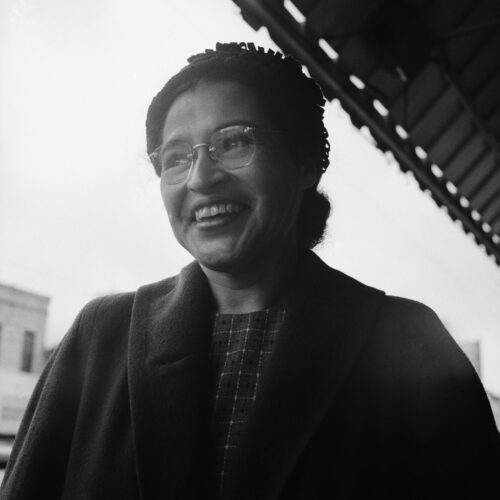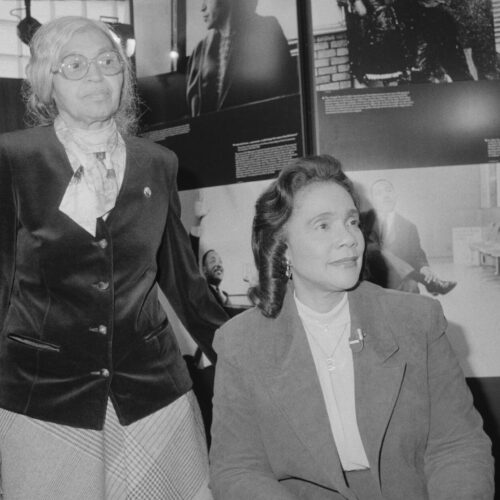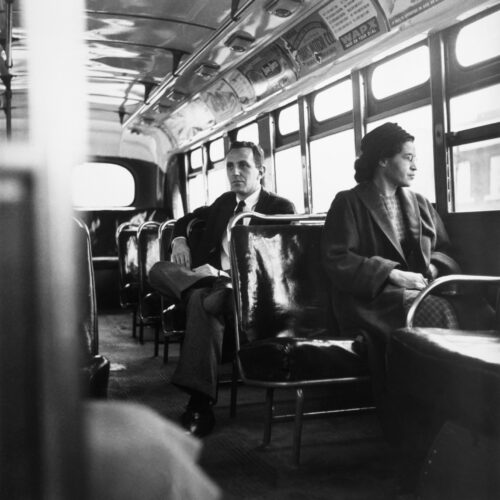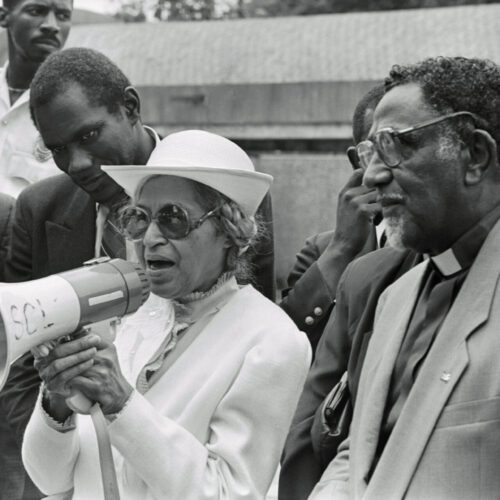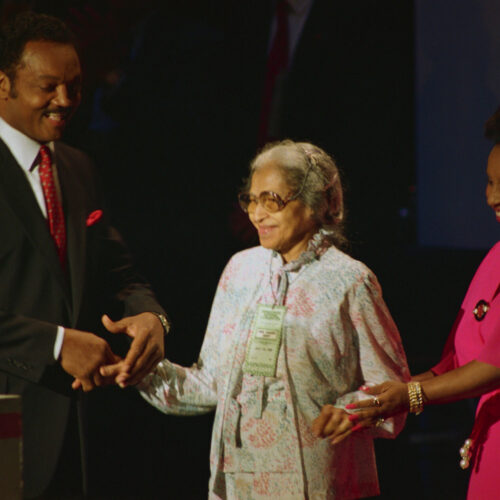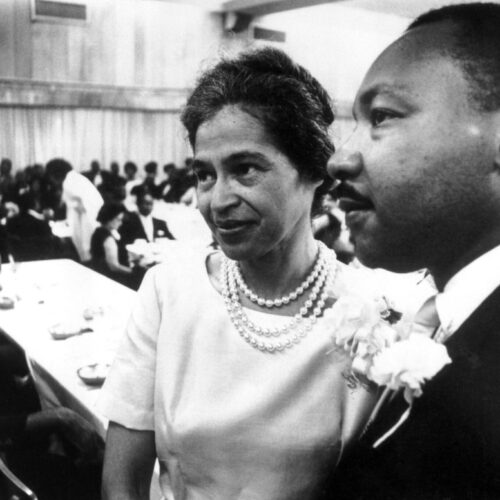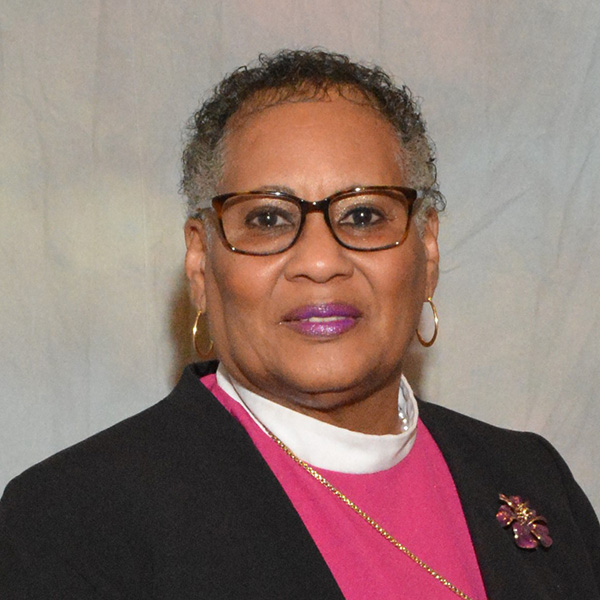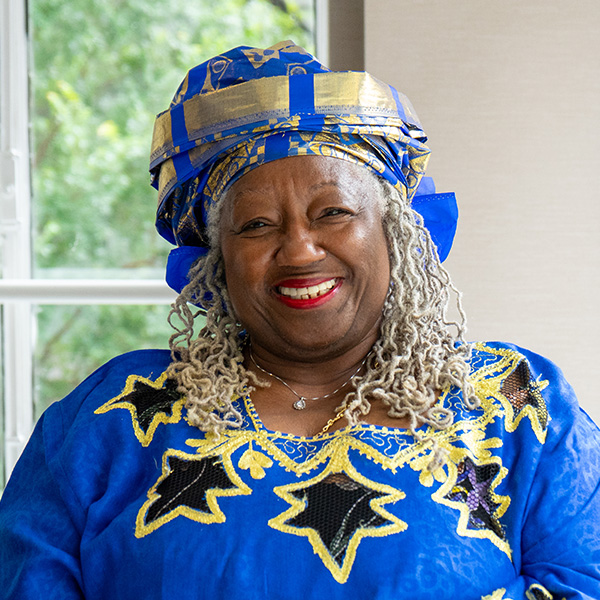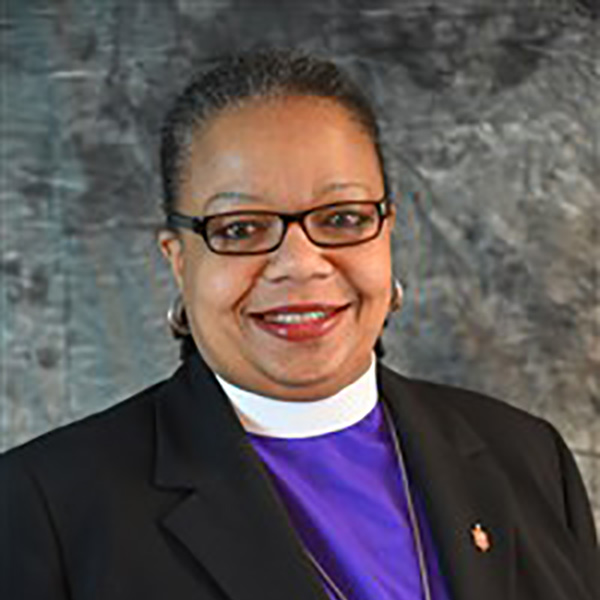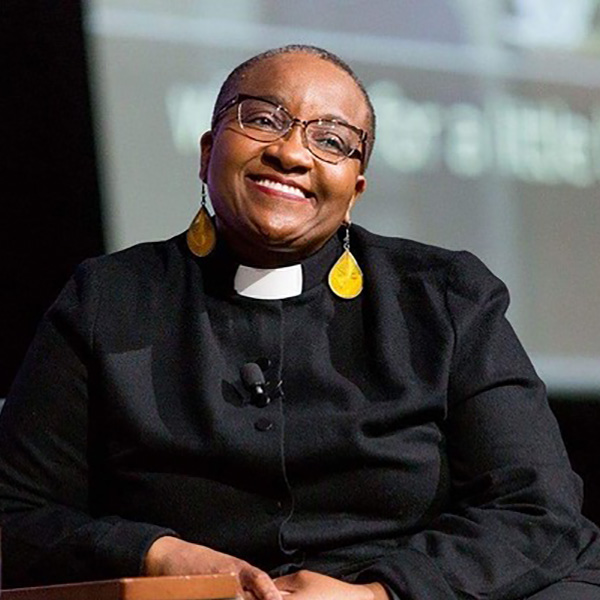Biography
Early Life
Known as the mother of the Civil Rights Movement, Rosa Parks is most recognized for refusing to give up her seat on a segregated public bus. That decision sparked the 1955 Montgomery Bus Boycott in Alabama.
Rosa Louise McCauley was born on February 4, 1913, in Tuskegee, Alabama. She grew up on their maternal grandparents’ farm outside of Montgomery, Alabama, with her mother and brother.
Her devotion to the Christian faith developed at an early age. She was baptized at Mount Zion AME Church in Pine Level, Alabama, at the age of two.
In 1919, she attended the Pine Level segregated school. Then, in 1924 she interrupted her schooling to be the primary caretaker for her ailing grandmother and mother.
In 1932, Rosa married Raymond Parks.
She went on to attend Montgomery Industrial School and Alabama State Teachers College to complete her high school education by 1934.
Religion to Activism
Park’s Christian faith in God emboldened her with the courage to stand up to segregation.
She was an active member at St. Paul AME Church in Montgomery, Alabama, where she served as a church stewardess and taught Sunday School.
In her autobiography Quiet Storm, she recalled that “I felt the Lord would give me the strength to endure whatever I had to face. God did away with all my fear,” when she notably refused to give her bus seat to a white male passenger on December 1, 1955.
Her refusal resulted in an arrest that propelled her to international fame, though sometimes her activism was misconstrued.
She later wrote in Rosa Parks: My Story that
People always say that I didn’t give up my seat because I was tired, but that isn’t true. I was not tired physically, or no more tired than I usually was at the end of a working day. I was not old, although some people have an image of me as being old then. I was forty-two. No, the only tired I was, was tired of giving in.
Parks worked with local and national leaders like Martin Luther King, Jr. to use her protest as a catalyst for change.
The 1955 Montgomery Bus Boycott was one of the most definitive and successful public protests of the Civil Rights Movement, which ultimately desegregated public buses with a ruling from the U.S. Supreme Court.
However, backlash from the victory and the threat of violence forced Parks and her husband to leave Montgomery for Detroit, Michigan, where they lived for the rest of their lives.
Civil Rights Leadership
Though Parks became a symbol of the movement because of her refusal to give up her seat on a bus, she was engaged in a variety of activism before and after the event.
She spent most of her life contributing to community building, beginning with her membership in the National Association for the Advancement of Colored People (NAACP).
She interviewed victims of injustice, maintained organizational files, and participated in numerous protests like the 1930s campaign to free unjustly imprisoned Black youth, known as the Scottsboro Boys.
Her faith continued to be present in all her activism, including her participation in the 1957 Prayer Pilgrimage to the Lincoln Memorial in Washington, D.C., where she and thousands of people from across the United States prayed for freedom and equal rights.
Her activism was so highly regarded that the Southern Christian Leadership Conference inaugurated the annual Rosa Parks Freedom Award in 1963.
Shepherding Social Change
Parks continued to be involved with the movement in the 1963 March on Washington, the 1964 Mississippi Freedom Summer, the 1968 Poor People’s Campaign, along with a host of other significant protests.
She worked as a congressional aide to Congressman John Conyers for over two decades.
During the 1970s and 1980s, Rosa received the NAACP’s Spingarn Medal, the UAW’s Social Justice Award, and the Martin Luther King, Jr., Nonviolent Peace Prize.
In the 1990s, the Smithsonian unveiled a bust in her likeness. The Rosa Parks Peace Prize was established in Stockholm, Sweden. She received the Congressional Gold Medal, and the Medal of Freedom was awarded to her by President Bill Clinton.
After her death in 2005, her body lay in the United States Capitol Rotunda. She was the first woman to receive that distinction and visitors from around the world came to pay their respects.
Many public memorials have been erected in her honor, including a sculpture unveiled on Capitol Hill in 2006.
Rosa Parks’ staunch faith and civil disobedience continue to inspire new generations of activists who propel the fight for freedom forward in the 21st century.
Their continued activism is the ultimate expression of her legacy, since as she stated in her 1987 Eyes on the Prize oral interview “I would like to be remembered as a person who wanted to be free… so other people would be also free.”
